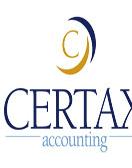For the year 2017 to 2018 there is a new tax year starting on the 6th of April. The basic personal allowance will now change to £11,500 so this means the new emergency tax code will now be 1105L for all employees. The basic limit will be £33,500. For Scottish tax-payers the basic rate limit will be £31,930.
The new threshold (starting point) for PAYE is £221 per week, £958 per month. This table shows the UK Income Tax rates and the Bandwidth Scottish rates:
% UK Rate Bandwidth Scottish Rate %
Basic Rate 20% £1 to £33,500 £1 to £31,930
Higher Rate 40% £33,501 to £150,000 £31,931 to £150,000
Addition Rate 45% £150,001 + £150,001 +
If you are paying the Scottish Income Rate tax, it applies to people who live in Scotland. This means that of your Income Tax will get paid to the Scottish government. This includes most taxable income such as wages and pension. Any employees who uses the Scottish tax rates you will have a “S” prefix on your tax code instead of having the suffix L code as the UK rate.
For each employee who will be working for you on the 6 April, you will need to:
- Prepare a payroll record
- Identify the correct tax code to use in the tax year
- Enter the correct tax code on the payroll record
When we send a new tax code for any of your employees, you will receive one of the following:
- An Electronic Data Interchange notice of coding
- Notification of coding through Internet if registered to use PAYE online service
- A paper form P6(T), ‘Notice to employer of employee’s tax code’
If you were expecting a tax code and HMRC didn’t send you one, then you will have to contact the Employer Helpline. If you request a new tax code from HMRC then you might receive the tax codes as late as 30 March 2017.
What you need to do before 6 April 2017 is employees without a new tax code has to carry forward the authorised tax code from the 2016 to 2017 payroll record to the 2017 to 2018 payroll record. The tax codes that are included are BR, SBR, D0, SD0, D1, SD1 and NT.
Employees with new tax codes need to keep and use the form P6(T) or other tax code notification with the most recent date on for each employee. You need to:
- Scrap any form P9(T) or other tax code notification for the same employee with an earlier date
- tax code from the form P9(T) or from other notification can be copied and used on your payroll record
- Update any tax codes where you have received form P9(T) or other tax code notification after you have set up your payroll records
With the basic PAYE Tools, you must not action this P9X until after you have paid employees for the last time in 2016 to 2017. HMRC’s provides Basic PAYE Tools which calculates payroll deductions and submits information online. If you are intend to carry on using them for 6 April 2017, then you will need to wait until early April 2017 when the next version of Basic PAYE Tool with be available.
You don’t need to change the tax code for any employee who leaves before 6 April. If an employee starts between 6 April and 24 May, and gives you a P45, follow the instructions at HMRC. Make sure that all information payroll software incorporates the income tax charges from 6 April 2017. If you are using manual payroll, you will need the new Taxable Pay Tables Manual Method (April 2017).

